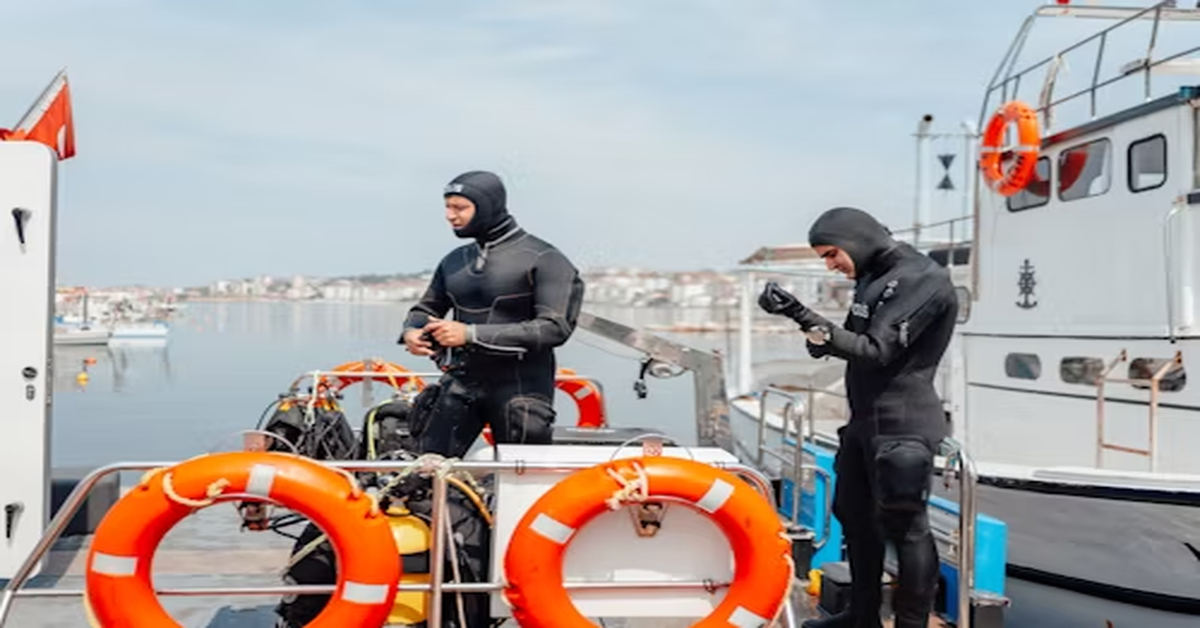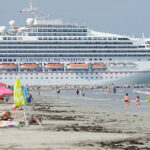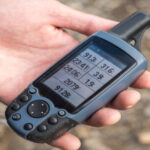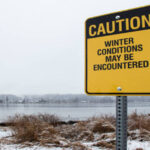The ocean is one of the most unpredictable environments on Earth. Weather can change dramatically within minutes, turning calm, sunlit waters into a dangerous battlefield of waves, lightning, and wind. For people who work or travel on water—fishermen, sailors, boat operators, and coastal communities—staying aware of these sudden changes can mean the difference between safety and disaster. One of the most critical alerts that serve as a lifeline to mariners during hazardous weather conditions is the Special Marine Warning.
This type of warning is designed to inform those on or near the water about the imminent arrival of rapidly developing, severe weather systems. It’s short-lived but urgent, providing a narrow window for action before the weather hits. Understanding what this warning means, what conditions trigger it, and how to respond effectively is essential knowledge for anyone who ventures onto open water.
This article offers an in-depth exploration of the Special Marine Warning—its purpose, criteria, differences from other warnings, communication channels, and how to stay safe when one is issued.
1. What Is a Special Marine Warning?
A Special Marine Warning is an urgent weather alert issued for coastal or nearshore waters when dangerous weather conditions such as strong winds, hail, thunderstorms, or waterspouts develop rapidly. It is intended to warn mariners of sudden, localized hazards that could threaten lives or cause damage to vessels.
Unlike standard marine forecasts that cover general weather over longer periods, a Special Marine Warning targets short-duration, severe events—usually lasting less than two hours—and focuses on specific, localized areas. It acts as a bridge between regular forecasts and emergency alerts, ensuring that boaters receive timely information when the weather escalates quickly.
The core purpose of this warning is not only to inform but also to prompt immediate action. Once issued, mariners are advised to seek safe harbor, secure loose equipment, and avoid exposure to open waters until the hazardous conditions have passed.
2. Why Is a Special Marine Warning Important?
Marine environments lack the fixed infrastructure and shelter that land-based environments have. When a severe weather system approaches over water, mariners can’t simply pull over and take cover. A few minutes of warning can be the difference between returning to safety or being caught in perilous waves and winds.
The Special Marine Warning serves three main functions:
- Immediate Hazard Alert: It provides real-time notice of severe weather occurring or expected to occur within the next couple of hours.
- Localized Precision: It pinpoints the affected water bodies or coastal zones instead of issuing a broad regional alert.
- Safety Activation: It instructs mariners to take specific, urgent protective actions such as seeking harbor, donning life vests, or halting navigation.
The importance of this warning lies in its speed and specificity—qualities that can save lives in high-risk marine environments.
3. Criteria for Issuing a Special Marine Warning
Meteorologists do not issue these warnings lightly. A Special Marine Warning is triggered only when specific thresholds of dangerous weather are reached or expected. Below is a table summarizing common criteria used for issuance:
| Hazard Type | Trigger / Threshold | Duration of Event | Examples of Impact |
|---|---|---|---|
| Wind Gusts | 34 knots (≈39 mph) or higher | Typically <2 hours | Difficult maneuverability, capsizing risk for small boats |
| Hail | Hail diameter ≥ ¾ inch (≈19 mm) | Usually short bursts | Structural damage to vessels, injury risk |
| Waterspouts | Formation or observation near coastal zones | Momentary but severe | Tornadic winds over water, overturning small boats |
| Severe Thunderstorms | Strong lightning, heavy rain, downdrafts | 1–2 hours | Reduced visibility, wave surges, electrical hazards |
| Sudden Squalls / Microbursts | Intense, localized wind bursts | Minutes to 1 hour | Rapidly shifting conditions, severe turbulence |
The warning is issued only when these hazards are not already covered by another ongoing marine warning or advisory.
4. Difference Between a Special Marine Warning and Other Marine Alerts
It’s easy to confuse a Special Marine Warning with other marine advisories, but there are clear distinctions in scope, duration, and intensity.
| Type of Alert | Wind Speed Range / Severity | Duration | Scope | Purpose |
|---|---|---|---|---|
| Small Craft Advisory | 18–33 knots | Several hours | Coastal waters | Alerts small vessels to moderate hazards |
| Gale Warning | 34–47 knots | Several hours to days | Large regions | Warns of sustained strong winds |
| Storm Warning | 48+ knots | Prolonged | Large coastal areas | Severe and long-lasting storm events |
| Special Marine Warning | 34+ knots (gusts), sudden | <2 hours | Localized zones | Sudden, intense, short-lived hazards |
From this comparison, you can see that a Special Marine Warning serves as a short-term emergency alert for fast-developing weather that doesn’t fit the longer, broader parameters of a Gale or Storm Warning.
5. Common Weather Hazards That Trigger a Special Marine Warning
Weather systems that prompt these warnings share a common trait—rapid onset and high intensity. Let’s explore the major hazards in detail.
A. Severe Thunderstorms
Thunderstorms can generate high winds, lightning, hail, and torrential rain. Over water, these hazards reduce visibility, disrupt navigation, and make decks slippery. A thunderstorm that intensifies faster than expected or moves toward populated boating areas can lead to an immediate Special Marine Warning.
B. Waterspouts
Waterspouts are tornado-like columns of rotating air extending from clouds to the water’s surface. They can lift spray, create intense winds, and capsize small boats. They are a common cause for Special Marine Warnings, particularly in tropical or subtropical waters.
C. Squalls and Microbursts
A squall is a sudden, sharp increase in wind speed often associated with storm fronts. A microburst, on the other hand, is a powerful downdraft that spreads outward after hitting the water’s surface. Both phenomena can develop with little notice and pose significant danger to marine vessels.
D. Large Hail
Hail can damage radar equipment, navigation lights, and exposed surfaces. When hailstones reach or exceed ¾ inch in diameter, it often justifies a Special Marine Warning.
E. Sudden Wind Shifts
Rapid directional wind changes can destabilize boats, especially those under sail. These shifts are often early indicators of fast-moving weather fronts.
6. How Special Marine Warnings Are Communicated
Marine warnings must reach mariners quickly and reliably. The following systems are commonly used to disseminate Special Marine Warnings:
- VHF Marine Radio – Weather channels continuously broadcast updates. Mariners should monitor these channels at all times.
- NOAA Weather Radio – Transmits automated warnings, often with alarm tones to alert listeners of urgent updates.
- Mobile Weather Apps – Many modern apps now deliver push notifications directly to boaters.
- Electronic Navigation Systems – Some GPS and chartplotters are equipped to display alerts automatically.
- Emergency Alert System (EAS) – Broadcasts warnings across television and radio stations for coastal communities.
The key to survival is awareness—a warning is only useful if it’s received and understood. Boaters are advised to carry at least one reliable communication device capable of receiving marine alerts.
7. Steps to Take When a Special Marine Warning Is Issued
The effectiveness of a Special Marine Warning depends on how mariners respond. Here’s what to do immediately after hearing such an alert:
- Seek Shelter – If close to shore, return to port or find a protected harbor.
- Reduce Speed and Secure Equipment – Loose items can become projectiles during strong winds or waves.
- Ensure Life Jackets Are On – Everyone on board should wear a personal flotation device.
- Monitor Radio Updates – Stay tuned for updates on the storm’s movement and intensity.
- Avoid Waterspouts and Thunderstorms – Steer clear of visible funnel clouds or dark storm cells.
- Stay Below Deck During Lightning – Avoid touching metal parts, and stay in enclosed areas.
- Communicate Your Position – If in distress or unable to reach shelter, notify the Coast Guard or nearby vessels.
Taking these actions can drastically increase survival chances and minimize property damage.
8. The Science Behind Special Marine Warnings
Meteorologists rely on a mix of radar, satellite, and surface observations to issue timely warnings. Specialized Doppler radar systems detect the rotation, wind velocity, and intensity of storm cells over water.
When meteorologists observe rapid storm development—especially cells capable of producing dangerous winds or waterspouts—they issue a Special Marine Warning targeted at affected marine zones.
Factors analyzed before issuance include:
- Storm speed and trajectory
- Wind gust potential
- Sea surface temperature
- Cloud rotation patterns
- Radar reflectivity (indicating hail or heavy rain)
- Lightning density and frequency
This combination of real-time monitoring and predictive modeling helps issue warnings early enough for mariners to act.
9. Regional Coverage and Validity Duration
Special Marine Warnings usually cover coastal waters extending up to 60 nautical miles offshore, but the actual coverage depends on geography and weather system behavior.
| Parameter | Typical Range / Value |
|---|---|
| Coverage Area | Nearshore/coastal waters, bays, and large lakes |
| Duration | 1 to 2 hours maximum |
| Update Frequency | Every 30 minutes or as conditions change |
| Issuing Authority | National meteorological agency (e.g., NWS in the U.S.) |
| Communication Mediums | Radio, apps, TV, satellite alerts |
10. Preventive Preparedness: How Mariners Can Stay Ready
Preparation is the best defense against marine emergencies. Mariners should adopt a set of standard practices to remain ready for sudden warnings:
- Pre-Departure Weather Check: Review forecasts before leaving shore, even for short trips.
- Install Weather Alert Receivers: Radios with SAME (Specific Area Message Encoding) can receive area-specific warnings.
- Regular Safety Drills: Conduct crew drills to ensure everyone knows their role during emergencies.
- Equip Vessels with Safety Gear: Carry life jackets, flares, fire extinguishers, and waterproof communication devices.
- Maintain Clear Escape Routes: Always know the nearest safe harbor or sheltered location.
- Understand Cloud and Wind Indicators: Recognize early visual signs of impending storms.
Preparation doesn’t eliminate risk but drastically reduces panic and confusion when time is limited.
11. Human Factors: Why Some Mariners Ignore Warnings
Despite clear communication systems, many maritime accidents occur because people underestimate or ignore warnings. Reasons include:
- Overconfidence: Experienced boaters may think they can handle sudden weather.
- Lack of Awareness: Some vessels lack functioning radios or weather receivers.
- Economic Pressure: Commercial operators may continue working to avoid losses.
- Poor Understanding: Inexperienced boaters might not grasp the seriousness of the alert.
Education and training are key to overcoming these behavioral risks. Awareness campaigns emphasizing that “Special” equals “Immediate Danger” can help ensure better compliance.
12. How Special Marine Warnings Save Lives
Every year, Special Marine Warnings prevent accidents and fatalities by giving mariners critical lead time. Even a 10-minute warning allows enough time to change course, secure a vessel, or seek shelter.
In historical instances where storms developed suddenly—such as unexpected squall lines on major lakes or coastal areas—timely marine warnings reduced incidents of capsized vessels and loss of life.
The real power of the Special Marine Warning lies in its immediacy. It’s not a general forecast; it’s a direct call to action.
13. Safety Technology Supporting Special Marine Warnings
Modern advancements continue to enhance marine safety systems. Innovations include:
- AI-Based Nowcasting: Predicts small-scale storm movements in real time.
- Satellite-Based Alerts: Deliver warnings to ships beyond traditional radio range.
- Automatic Identification Systems (AIS): Send alerts directly to vessel navigation displays.
- Integrated Marine Apps: Combine radar imagery, GPS tracking, and warning notifications.
Technology ensures that even mariners in remote areas can receive life-saving warnings with minimal delay.
14. Training and Education for Mariners
Safety depends not just on technology but on people’s knowledge. Many maritime schools and boating programs now include weather awareness training. Key learning goals include:
- Reading marine forecasts
- Recognizing visual storm cues
- Understanding different warning levels
- Performing emergency procedures
- Communication protocols during warnings
Knowledge builds confidence and ensures faster, more effective reactions during sudden hazards.
15. Role of Coastal Authorities and Meteorological Services
Agencies responsible for issuing Special Marine Warnings play a vital role in national safety networks. They monitor conditions continuously, using weather buoys, satellite imagery, and ground radar systems.
Their responsibilities include:
- Continuous observation of atmospheric conditions.
- Quick dissemination of warnings to coastal and offshore vessels.
- Collaboration with Coast Guard and harbor authorities.
- Post-event analysis to improve future forecasting accuracy.
These agencies form the backbone of marine weather safety, ensuring information reaches those who need it most.
16. Case Study: Sudden Squall Over a Coastal Bay
Imagine a small fishing fleet working just off the coast on a calm morning. Within minutes, meteorologists detect a rapidly intensifying thunderstorm cell approaching from the west. Radar shows rotation, and surface instruments record sharp drops in pressure.
A Special Marine Warning is immediately issued for that bay. Vessels receive alerts on VHF radio and head toward port. Within 30 minutes, winds rise above 40 knots, lightning fills the sky, and waves surge.
Because of the early warning, all boats reach shelter safely. Without that alert, the situation could have been catastrophic.
This scenario highlights the importance of quick response and communication efficiency.
17. Comparison: Special Marine Warning vs. Land-Based Warnings
| Aspect | Special Marine Warning | Land-Based Severe Thunderstorm Warning |
|---|---|---|
| Environment | Coastal/nearshore waters | Land areas |
| Hazards | Wind gusts, hail, waterspouts | Tornadoes, hail, heavy rain |
| Duration | 1–2 hours | 1–3 hours |
| Response | Seek safe harbor, stay off water | Seek shelter indoors |
| Communication | VHF radio, marine channels | Radio, TV, mobile alerts |
Both systems share the goal of saving lives through timely alerts, but their communication and safety instructions differ due to environmental challenges.
18. Common Myths About Special Marine Warnings
- “They’re only for large ships.”
False. These warnings are for all vessels, including small recreational boats. - “It means a hurricane is coming.”
Incorrect. It refers to short-term severe weather, not long-lasting storms like hurricanes. - “It’s okay to continue sailing if you’re experienced.”
Experience does not protect against nature’s unpredictability. Even skilled sailors must take shelter. - “If the sky looks clear, the warning can be ignored.”
Storms can form or move faster than they appear. Never dismiss a warning. - “It’s a forecast, not an immediate danger.”
No—the warning indicates ongoing or imminent danger, not a distant possibility.
19. Future Improvements in Marine Warning Systems
To further improve the effectiveness of Special Marine Warnings, upcoming advancements may include:
- Hyper-local radar grids providing real-time coverage of small water bodies.
- Marine-specific alert tones for faster recognition.
- Smart buoy networks that transmit data directly to nearby vessels.
- Multi-language warning broadcasts for international waters.
Continuous innovation ensures these warnings remain one of the most reliable tools in maritime safety.
Conclusion
The Special Marine Warning is more than just a weather alert—it’s a vital line of defense for anyone navigating open waters. It’s designed to deliver immediate, actionable information that helps mariners respond to sudden, severe weather hazards.
Understanding the meaning, criteria, and appropriate responses to this warning empowers mariners to make smart, life-saving decisions. The ocean’s beauty hides its volatility, and respecting the signals that nature and science provide is the first step toward safe navigation.
Ultimately, preparedness, awareness, and quick action turn every Special Marine Warning from a threat into a lifesaving opportunity.
FAQs
1. What does a Special Marine Warning mean?
It’s a short-term alert for coastal and nearshore waters warning of severe weather such as high winds, hail, or waterspouts.
2. How long does a Special Marine Warning last?
Typically up to two hours, depending on how long the hazardous conditions persist.
3. Who issues a Special Marine Warning?
National meteorological agencies such as the National Weather Service (NWS) in the U.S. issue these warnings.
4. What should mariners do during a Special Marine Warning?
Seek shelter, reduce speed, secure loose gear, wear life jackets, and monitor updates until the warning is canceled.
5. How is a Special Marine Warning different from a Small Craft Advisory?
A Small Craft Advisory covers moderate but prolonged conditions; a Special Marine Warning covers sudden, severe, short-term hazards.











